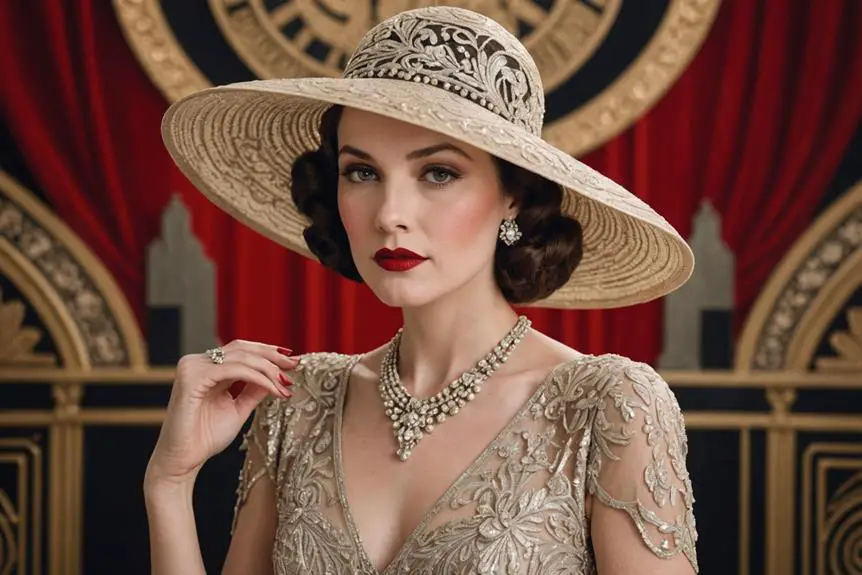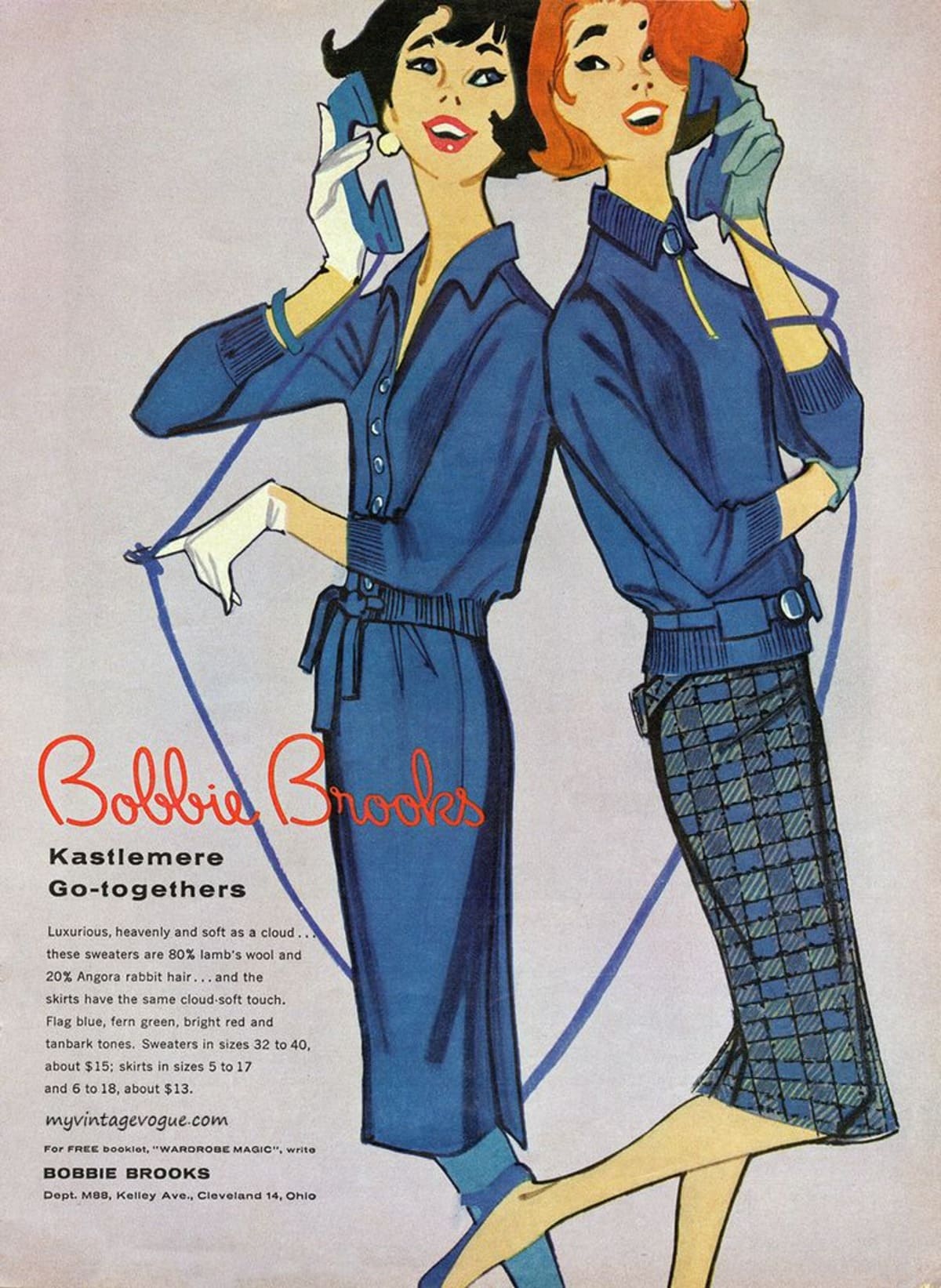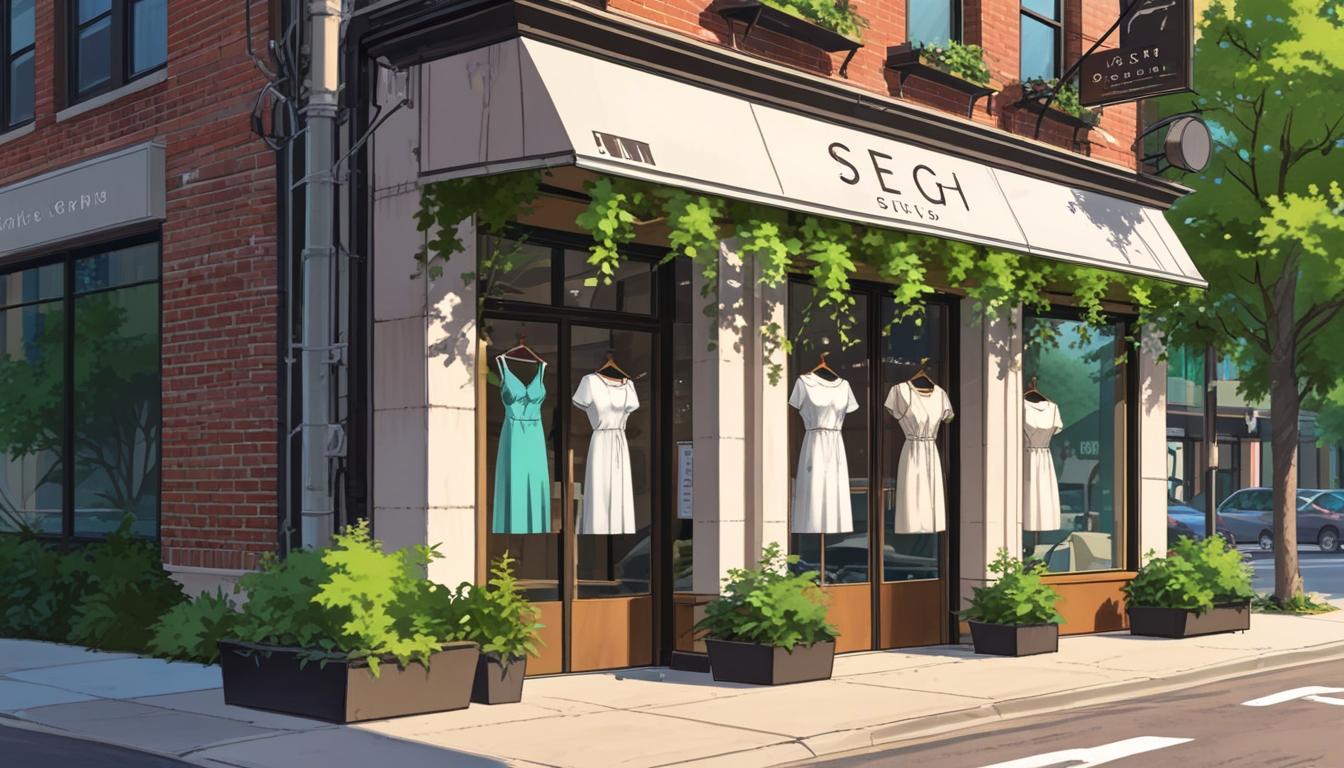In the 1960s, women's silk stockings emerged as a powerful fashion statement, marking a shift toward bold styles and liberation. You'd find a variety of options, from thigh-highs to seams evoking vintage elegance. Brands like Hanes and Burlington catered to evolving tastes, bringing unique designs in vibrant colors. Mini skirts popularized silk stockings as playful yet chic legwear, reflecting the era's cultural shifts. Silk's luxurious feel and durability also made it a favorite. As nostalgia fuels modern interest in these iconic pieces, there's much more to uncover about their significance in fashion history.
Historical Overview of Stockings
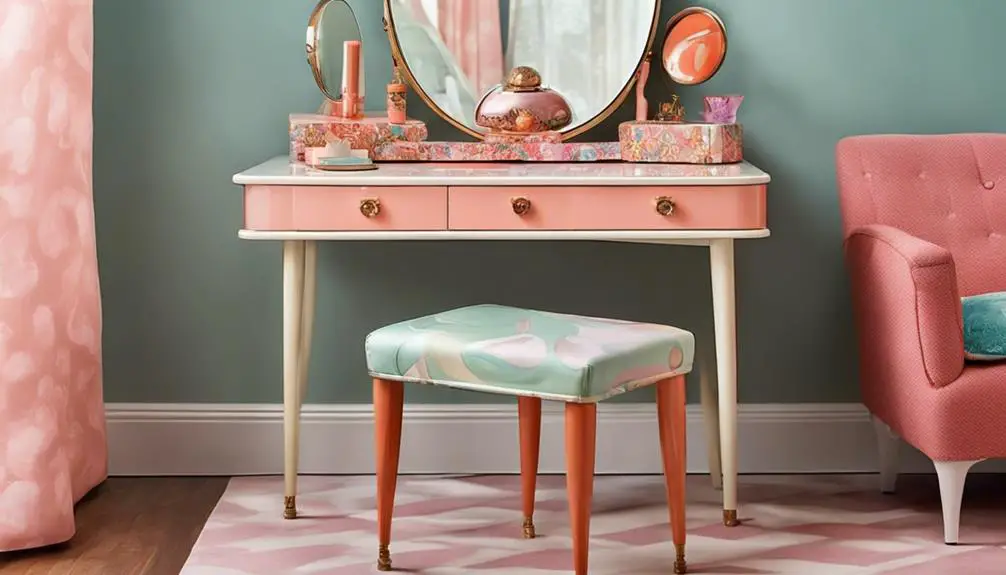
The evolution of women's silk stockings is a fascinating journey through fashion history, marked by innovation and cultural shifts. In the late 1930s, the introduction of nylon stockings revolutionized the market, providing a durable and affordable alternative to silk. This change laid the groundwork for the explosion of popularity stockings experienced in the 1960s, where fully fashioned styles became essential to women's wardrobes. During this time, vintage clothing brands began to adopt unique labeling techniques, reflecting the era's distinct fashion sensibilities, which enhanced the appeal of these garments to collectors and enthusiasts. As you explore this era, you'll notice that stockings were no longer just practical; they symbolized elegance and femininity. Seam designs, including the iconic Cuban heel, became a hallmark of vintage stocking styles, adding a touch of sophistication to outfits. Brands like Hanes and Burlington capitalized on this trend, offering diverse options, from thigh-highs to demi-toe varieties, catering to the evolving tastes of women.
Moreover, the cultural significance of stockings surged, fueled by fashion trends that embraced rockabilly and pinup aesthetics. This resurgence sparked a renewed interest in vintage styles, making 1960s stockings highly collectible today, especially those classified as NOS (New Old Stock). The meticulous craftsmanship and design of these stockings reflect a rich history that continues to inspire fashion enthusiasts, and understanding the historical context of brands can enhance the ability to identify genuine vintage pieces vintage clothing labels.
Fashion Trends of the 1960s
Revolutionizing the landscape of women's fashion, the 1960s ushered in a vibrant era marked by bold colors, innovative silhouettes, and a spirit of liberation. As you explored this decade, you'd notice how the introduction of mini skirts and geometric patterns redefined traditional attire, making silk stockings a stylish complement to new looks. Seamless and fully fashioned stockings took center stage, embodying the sleek aesthetic of the times.
| Trend | Description | Impact on Fashion |
|---|---|---|
| Bold Colors | Bright hues and dynamic patterns | Reflected the era's energy |
| Mini Skirts | Short hemlines that challenged norms | Empowered women's fashion |
| Thigh-highs | Flirty and daring legwear | Created playful outfits |
| Knee-highs | Subtle elegance for everyday wear | Versatile fashion staple |
| Iconic Figures | Influencers like Twiggy shaped trends | Made silk stockings iconic |
You'd observe how styles evolved, with nylon stockings still holding sway from earlier decades, yet silk remained a choice for those seeking luxury. The first and second waves of fashion evolution in this era intertwined, showcasing women's newfound freedom through what they wore.
Popular Brands and Styles
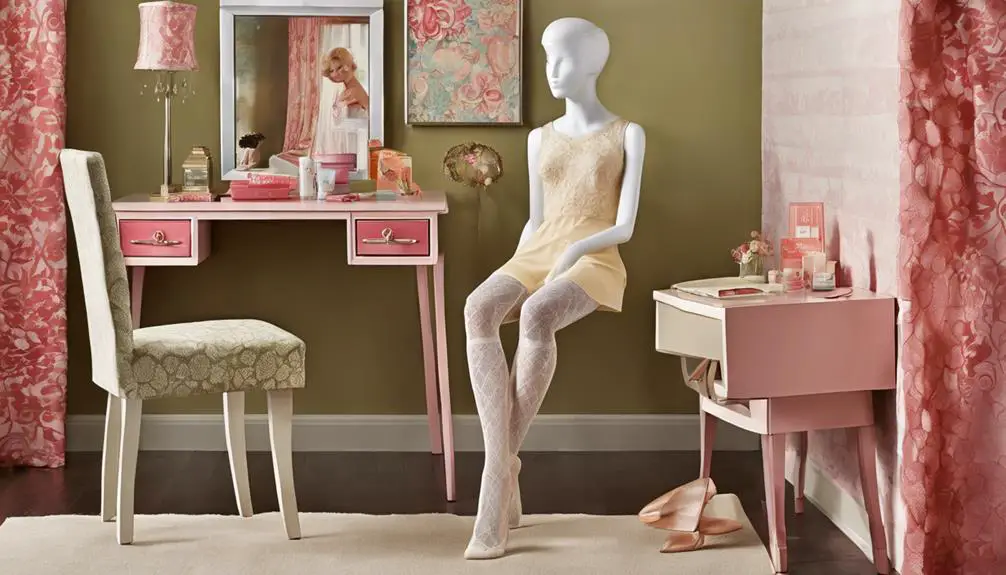
Silk stockings in the 1960s weren't just a fashion accessory; they represented an evolving identity for women. Popular brands like Hanes, Burlingtons, and Kayser dominated the market, each known for their quality and unique styles that catered to a shifting cultural landscape. You'd find key styles such as seamless, fully fashioned, and thigh-high stockings, often enhanced with distinctive elements like Cuban heels and pointed toes. The appeal of vintage clothing is further highlighted by the craftsmanship and materials used in these stockings, reminiscent of the era's fashion trends that identified vintage pieces.
The color palette leaned toward vintage shades like taupe, cinnamon, and off-black, reflecting the era's fashion trends and appealing to collectors who sought authenticity. The rising rockabilly and pinup aesthetics infused a playful yet sophisticated vibe into silk stockings, reinforcing their status as a staple in vintage fashion. Additionally, specific sizes, particularly the coveted 9 1/2, became highly sought after, illustrating the demand for genuine 1960s styles among collectors. These brands and styles didn't merely serve practical purposes; they were symbols of femininity and empowerment, allowing women to express their identities and embrace their evolving roles in society. In this scenario, silk stockings became an essential component of a woman's wardrobe, merging fashion with personal expression.
Types of Silk Stockings
During the 1960s, women embraced a diverse array of silk stocking styles that not only complemented their outfits but also catered to their evolving fashion sensibilities. Among the most notable options were fully fashioned stockings, which featured distinct seams running down the back. These stockings offered a vintage appeal and spoke to a time-honored craftsmanship that many women appreciated.
As comfort and style began to merge, seamless stockings gained traction. Their smooth appearance and the blend of silk and nylon provided both durability and stretch, making them an ideal choice for everyday wear. For those special occasions, ultra sheer silk stockings, typically around 10 denier or less, became the go-to option, delivering a delicate and elegant look that perfectly suited formal events.
The introduction of nylon alongside silk revolutionized the stocking industry, enhancing production capabilities and increasing availability. This evolution in materials allowed women to experiment with different styles and textures, reflecting their individuality and personal taste. Ultimately, the variety of silk stocking types in the 1960s not only highlighted fashion trends but also empowered women to express themselves in a dynamic and changing world.
Pricing and Market Demand
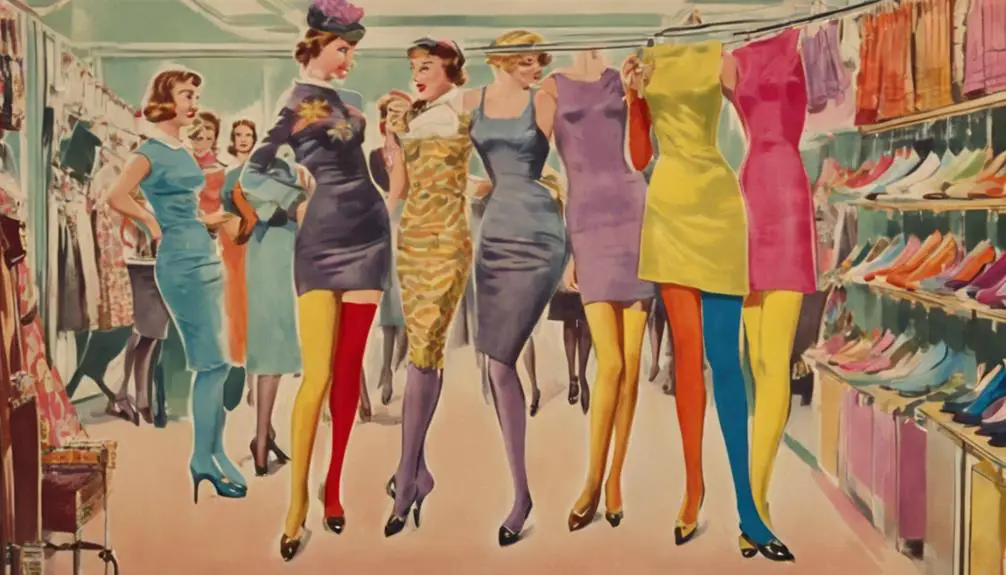
The allure of vintage silk stockings from the 1960s captivates collectors and fashion enthusiasts alike, driving a robust market demand. Prices can vary considerably, reflecting the collectible nature of these items. You might find sheer options starting at $14.99, while lots of multiple pairs can command up to $65.00. The following factors influence this pricing structure:
- Rarity: Styles like fully fashioned seamed stockings and seamless options are in higher demand.
- Negotiation: Many listings include "or best offer," allowing for price adjustments based on buyer interest.
- Shipping Costs: Typically, shipping ranges from $4 to $6, with some sellers offering free shipping to entice purchases.
- Interest Levels: High numbers of watchers on listings indicate strong market interest.
- NOS Items: New Old Stock from the 1960s garners even more attention due to its pristine condition.
Collectibility and Vintage Appeal
Demand for vintage silk stockings from the 1960s isn't just about pricing; it speaks volumes about their collectibility and vintage appeal. Collectors actively seek specific styles, particularly seamless options and the elusive size 9 1/2, indicating a keen awareness of the market. The history of vintage clothing labels plays a significant role in providing context and authenticity to these stockings, enhancing their desirability among collectors who appreciate brand provenance and quality. NOS (New Old Stock) vintage stockings, which remain unworn and in their original packaging, attract premium prices at auctions, showcasing their rarity and desirability.
Nostalgia plays a vital role in driving this demand. As retro fashion gains traction, you'll notice an increase in competition among buyers for authentic pieces. Popular brands like Hanes, Burlingtons, and Kayser add to the allure, with unique features such as Cuban heels and pointed toes enhancing their charm. This appeal is further amplified by the resurgence of rockabilly and pinup aesthetics in contemporary fashion, where vintage stockings have become a staple for those wishing to recreate iconic 1960s looks. Expert insights on vintage tags provide a deeper understanding of the value of these garments.
In this context, it's clear that the collectibility of these silk stockings transcends mere fashion; it taps into a broader desire for nostalgia and authentic style, making them highly sought after by fashion enthusiasts and collectors alike.
Cultural Significance of Stockings

Silk stockings in the 1960s emerged as more than just a fashion accessory; they became powerful symbols of femininity and sophistication, reflecting shifting societal attitudes toward women's roles and self-expression. As you navigate through this era, you'll notice how stockings weren't merely worn but celebrated, embodying a newfound freedom in women's fashion.
- Symbol of Liberation: Stockings paired with mini skirts signified a break from traditional norms.
- Pop Culture Influence: Icons like Audrey Hepburn and Marilyn Monroe elevated silk stockings to a must-have item.
- Nostalgia Factor: The demand for vintage pieces connected women to the glamour of earlier decades.
- Fashion Evolution: The change from nylon to silk highlighted a desire for luxury in everyday wear.
- Youth Culture: Stockings became an essential part of the burgeoning rockabilly and mod movements.
In this context, silk stockings represented more than style; they were a canvas for women to express their individuality and embrace their evolving roles in society. Their cultural significance during the 1960s is a reflection of the power of fashion as a means of self-empowerment and identity.
Supporting Mechanisms for Stockings
During the vibrant 1960s, the way women supported their silk stockings reflected not only personal preferences but also broader fashion trends and social shifts. You had three primary options: garter belts, hold-ups, and traditional garters. Each method offered distinct aesthetic and functional benefits, shaping your daily wardrobe choices.
Garter belts typically featured four to six straps and were often worn alongside girdles, enhancing both support and shaping. This combination emphasized a curvaceous silhouette, aligning with the decade's evolving beauty standards. However, as convenience became paramount, hold-ups gained popularity. With silicone bands for grip, they provided a hassle-free alternative, allowing you to embrace style without the fuss of multiple straps.
While traditional garters were less common, they still held a special place for formal occasions like weddings, adding an elegant touch to your attire. Ultimately, the choice of supporting mechanism greatly influenced the overall style and comfort of your stockings. Hold-ups, with their ease of wear, gradually won favor over the more complex garter belts, signaling a shift toward practicality in women's fashion.
Benefits of Wearing Silk Stockings

When you slip into a pair of silk stockings, you're not just choosing a garment; you're embracing a blend of comfort and elegance that defined women's fashion in the 1960s. The benefits of wearing silk stockings extend beyond mere aesthetics, offering a practical choice for any occasion.
- Luxurious feel: The smooth texture of silk enhances comfort, making you feel pampered throughout the day.
- Breathability: Natural silk fibers reduce moisture buildup, keeping your legs cool and dry, especially in warmer weather.
- Elegant sheen: The natural luster of silk adds sophistication to your outfit, perfect for formal events or elevating everyday looks.
- Graceful drape: The lightweight nature of silk allows for a flattering fit, accentuating your silhouette without constricting movement.
- Durability: Silk's inherent elasticity helps your stockings maintain their shape and appearance, ensuring they're a long-lasting investment.
Nostalgia and Modern Influence
Embracing the nostalgia of the 1960s, many modern fashion enthusiasts find themselves drawn to the iconic silk stockings that once defined femininity and elegance. This era saw a shift in women's fashion, where silk stockings became essential for enhancing leg lines, perfectly complementing the era's rockabilly and pinup aesthetics. Brands like Hanes and Burlingtons thrived, offering unique designs, such as Cuban heels and fully fashioned seams, which have now become highly sought-after collectibles.
The rise of nylon stockings in the late 1930s paved the way for a post-war boom, greatly expanding stock availability throughout the 1960s. Today, that nostalgia has surged, with contemporary designers often referencing these vintage styles, cleverly bridging the gap between past and present. The enduring allure of these silk stockings is evident in today's market, where vintage items command high prices, reflecting their cultural significance.
Frequently Asked Questions
What Was in Christmas Stockings in the 1960s?
In the 1960s, you'd find Christmas stockings filled with small toys, candies like Tootsie Rolls, practical items, and even fruit, reflecting a blend of nostalgia and practicality that highlighted family interaction and holiday joy.
Did They Wear Fishnet Stockings in the 60s?
Yes, you'd find many embracing fishnet stockings in the 60s, reflecting the era's bold fashion choices. These were often paired with mini skirts, symbolizing youthful rebellion and the innovative spirit of the time.
When Did Women's Stockings Stop Having Seams?
Women's stockings largely stopped having seams in the mid-1960s, as advancements in knitting technology led to the popularity of seamless designs. This shift reflected a demand for comfort and convenience in everyday fashion choices.
What Is the Origin of Silk Stockings?
Silk stockings originated in the medieval period, evolving from wool and linen. Their luxury status rose during the Renaissance, thanks to silk's softness and vibrant dyeing potential, marking them as a symbol of elegance in fashion history.


